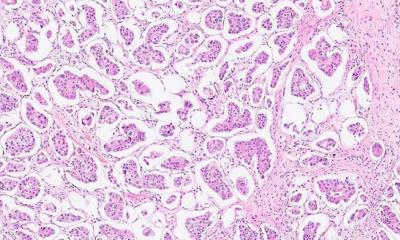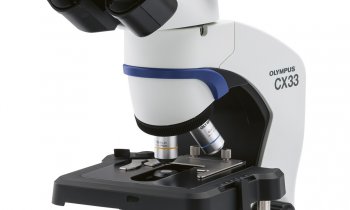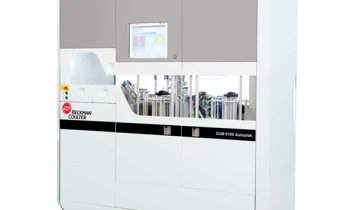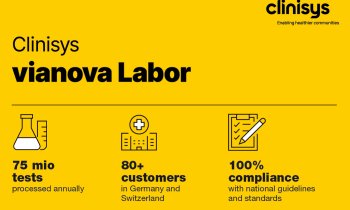Pandemic panic sends feathers flying
AIDS, SARS and now H5NI; just a brief beginning or the end? As the virus moves towards Europe, and millions of birds are slaughtered, interest has risen in a Chinese herb, a patent-sharing controversy and drug stockpiling
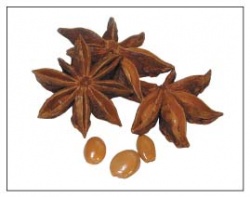
The rare herb Star Anise* grows on small trees in a few provinces of China. It is used for its pungent (liquorice-like) flavour in cooking. But the seeds also contain a special ingredient - shikimic acid - and this has taken on world importance. The acid is used to make the drug Tamiflu (oseltamivir phosphate), the influenza treatment thought to be the only one currently available that might reduce the severity of an attack by the avian virus H5NI, the ‘bird flu’ that, in humans, has caused around 60 deaths and over a hundred illnesses so far. These cases are not many, but the cry of ‘pandemic’ is rising because infected birds have been suspected or confirmed in parts of Europe.
There is little agreement about the actual danger to humans - the threat to people would be serious only if the virus develops into a form that can spread from person to person.
The situation has raised a multitude of questions. Meanwhile, politicians and health organisations in Europe, as elsewhere, are under pressure to ensure that if a HFNI pandemic does occur, their populations will receive the best treatment available to combat this infection. Some are not so sure they want to join the panic zone. In Switzerland, Interior Minister Pascal Couchepin (with responsibility for health issues) has said that it is almost impossible for people to catch this influenza and he has criticized the ‘hysteria’ surrounding it.
Meanwhile, Markos Kyprianou, EU health commissioner, advised having enough antiviral medicine to cover 25% of the 450 million people in the union. Belgium’s Health Ministry then suggested that the EU buy antivirals and not depend on individual governments to purchase them.
Meanwhile, 30 countries have placed extremely large orders with Roche for Tamiflu, among them France is reported as having 15 million doses of Tamiflu ready for use in an outbreak. The country’s National Institute for Public Health Surveillance also said that 100 million face masks have been bought and delivered, and 100 million more should arrive by the end of this year. (Two people suspected of having contracted the virus were hospitalised by French health authorities, but later released when tests proved negative).
Italy has 150,000 doses of Tamiflu, and has ordered six million more, according to Francesco Storace, the country’s minister for health. However, he pointed out that there is medical debate as to whether Tamiflu would be effective in the event of any H5N1 illnesses.
In the United Kingdom, Liam Donaldson, the chief medical officer, announced that vaccine manufacturers are being invited to tender contracts to supply 120 million doses, enough for two shots per person in the country, once the pandemic strain is known.
Problem? Although Roche now makes Tamiflu at 13 sites worldwide, producing more than 100 million capsules annually, the demand is massive. To meet pandemic demands, Roche reported that it had doubled production of Tamiflu in 2004 and doubled it again in 2005, and planned to double it again in 2006. However, the firm has enough orders to exhaust its production capacity both this year and next. The very nature of production is also a problem (see the section on Star Anise)
Roche spokesman Alexander Klauser: “Tamiflu has killed the bird flu virus in laboratory tests, but the results were more mixed when it was used on some of the 117 people who contracted the virus in Asia since 2003”
Many countries have asked the World Health Organisation to pressure Roche to relinquish the patent so that a generic version of the drug could be produced and it would be ‘cheaper’. Roche is now in discussions about licensing.
Drug costs and profits
Clearly this is a lucrative market for pharmaceutical companies. (On an online Roche-authorised site, 30 tablets are currently quoted as costing around 42 euros). Yet, in June, Gilead Sciences Inc, the California-based biopharmaceutical research company that invented the drug, delivered a ‘Termination Notice ‘ to Roche for their 1996 Development and License Agreement for Tamiflu. In this action, Gilead said the result would be that the rights to Tamiflu held by Roche would revert to Gilead. ‘Despite our repeated communication of concerns over the last several years, Roche has not adequately demonstrated the requisite commitment to Tamiflu since its launch in the United States nearly six years ago, nor has it allocated the necessary resources to realize the potential of the product as a treatment and preventive for influenza,’ said John C. Martin PhD, President and CEO of Gilead Sciences. ‘Gilead is taking this action in the interest of our shareholders and, importantly, because it is essential for public health that healthcare professionals and consumers have improved access to information about Tamiflu, as well as to the product itself.’ (Details: www.gilead.com)
Nonetheless, this month (October), Gilead Sciences announced its third quarter 2005 financial results: total revenues $493.5 Million, up 51% over the third quarter of 2004. This resulted in a net income for the third quarter of 2005 of $179.2 million. The net income in the same period in 2004 was $113.2 million.
Apart from substantial increases seen among the firm’s products, including its HIV product portfolio, in that period, royalty and contract revenues resulting from collaborations with corporate partners totalled $26.2 million - a 70% increase from $15.5 million in the third quarter of 2004. Gilead Sciences pointed out: ‘The increase was primarily driven by royalties of $12.1 million received from F. Hoffmann-La Roche Ltd (Roche) for sales of Tamiflu (oseltamivir phosphate) recognized by Roche in the second quarter of 2005, compared to $1.7 million of Tamiflu royalties received in the third quarter of 2004...’ (Other royalties were also mentioned).
Roche has also presented third-quarter revenues - showing a rise of 17%. The Swiss firm said sales of Tamiflu had more than doubled to 279m Swiss francs, compared with the same period last year. The company’s overall sales for the three months to the end of September rose to 8.8bn Swiss francs.
Star Anise
Now that licensing by Roche might occur, how will it work, given that the essential herb is not largely grown - and processing is not easy? Suitable Star Anise grows in only four regions of China. The plant is harvested only between March and May. Roche buys 90% of that harvest. Each section of the Star Anise flower holds a seed (see photograph) - about eight per star. Enormous amounts of these seeds are needed to obtain sufficient shikimic acid to produce Tamiflu.
A spokesperson for Roche pointed out that there is inevitably a shortage of the raw material.
When shikimic acid is extracted from the harvested seeds, in a three-step chemical process, at low temperature, it is converted into epoxide, then comes a dangerous part of the process, because the conversion of epoxide into azide involves a reaction that produces explosive material. Specialist companies do this and only handle the material in small quantities to reduce that problem.
Crystal strands of the active ingredient of Tamiflu are then produced and these are vacuum dried to be converted into capsules.
News roundup: Brenda Marsh
02.08.2006
- economy (1046)
- HIV/AIDS (71)
- markets (545)
- medication (528)
- microbiology (282)
- prevention (695)
- research (3456)



